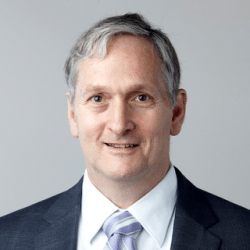
Cliff Tabin entered MIT as a graduate student in Biology in 1976. This was an extremely fortuitous time and place to begin a career in molecular biology, as the ability to create recombinant DNA had been invented the previous year. He carried out his thesis work studying oncogenes with Bob Weinberg. A fundamental question at that time was to understand the molecular difference between oncogenically activated oncongenes and their normal cellular progenitors. The first cloned oncogene was an activated version of a gene called ras isolated from a bladder carcinoma. Dr. Tabin's work identified a single amino acid change in the coding region of this gene as being the crucial oncogenic mutation; the first time the nature of a mutation involved in tumorgenesis was known.
As a postdoc, Dr. Tabin was drawn to the area of vertebrate embryology. After a year and a half of training as a postdoctoral fellow with Doug Melton at Harvard University, Dr. Tabin moved to an independent postdoctoral position at Massachusetts General Hospital, Department of Molecular Biology. There he initiated work on the molecular biology of limb development, which has continued to be one of the areas of focus of his laboratory at Harvard Medical School where he has been on the faculty in the Department of Genetics since 1989. He has been a Full Professor since 1997 and was appointed Chairman of the Department in January 2007.
Dr. Tabin was elected a member of the National Academy of Sciences in 2007. Among his many honors, he received the National Academy of Sciences Award in 1999; the March of Dimes Prize in Developmental Biology in 2008; elected to the European Molecular Biology Organization in 2010; received the Conklin Medal from the Society for Developmental Biology in 2012, received a ScD honoris causa degree from Union College, Schenectady, New York; asked to present the Harvey Lecture in 2012, and was elected Foreign Member of the Royal Society of London in 2014.
The common theme of Dr. Tabin's research investigations has been an attempt to understand "pattern formation", how the organization of an embryo arises during its development. His efforts are responsible for our current understanding of such embryological questions as why the leg is different in form from the arm, and why the heart is on the left and not the right, as well as evolutionary questions such as understanding the genetic basis for the differences in the shapes of the beaks of different species of Darwin's Finches in the Galapagos Islands.
In addition to his research program, Dr. Tabin has had a major involvement in education efforts at Harvard Medical School, teaching embryology and genetics to both the medical students and the graduate students. He has also played a leadership role in recent wide-ranging medical education reform at Harvard. Additionally Dr. Tabin has utilized his expertise in this area to assist the development of a new medical school in Nepal.